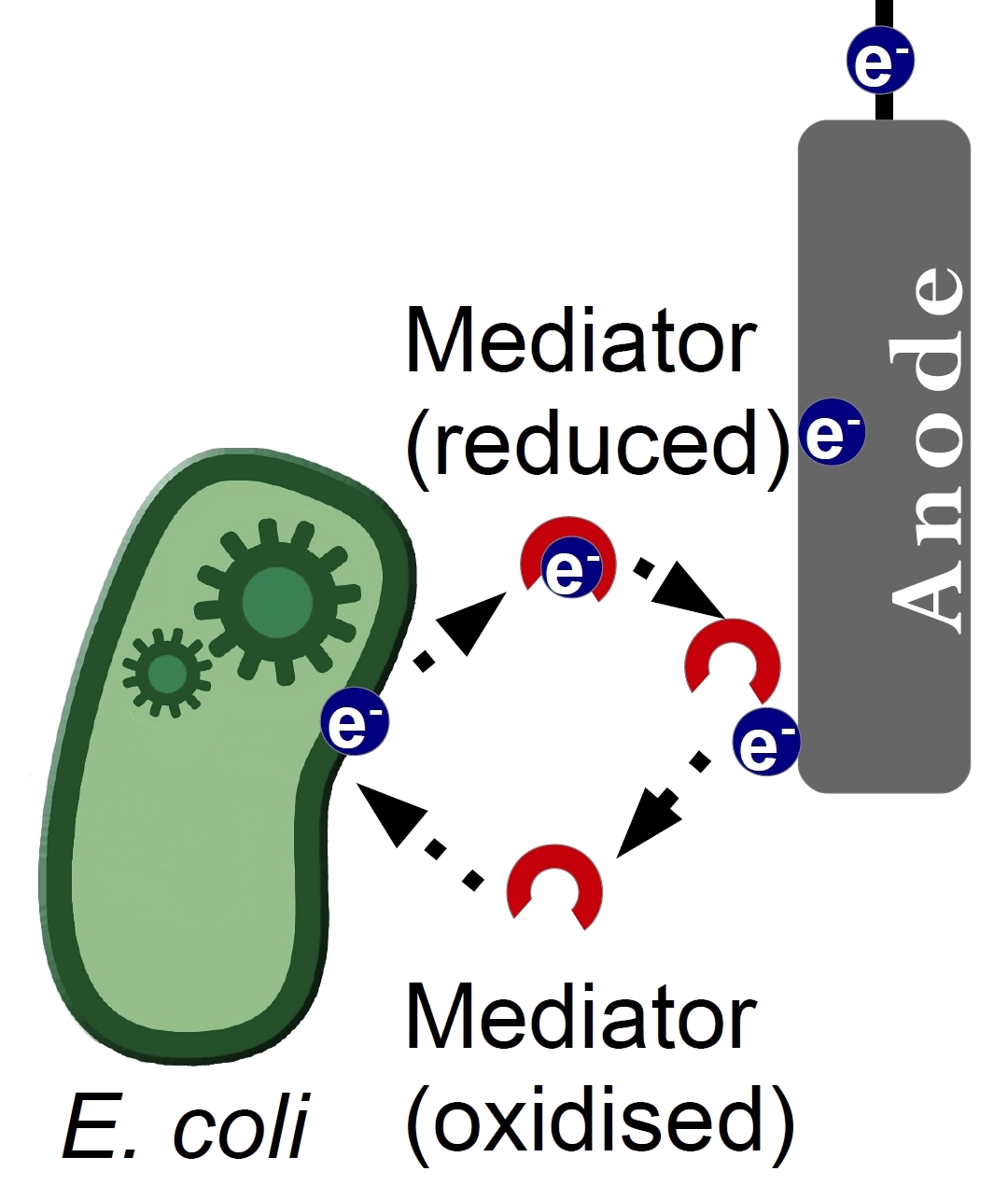Team:Bielefeld-Germany/Project/Mediators
From 2013.igem.org
Mediators
Overview
The efficiency of a Microbial Fuel Cell (MFC) depends on many factors. One of the known bottle necks is the electron transfer between a bacterium and the anode of the MFC. There are three mechanisms how this process occurs, through direct contact between bacterium and anode, through so-called nanowires and through a substance called a mediator. Mediators are usually small water-soluble molecules, that are able to undergo redox transformations. The mediator acts as an electron shuttle, enhancing the kinetics of the electron transfer. This approach has been proven to be generally quite successful and many substances were tested for their potential as electron shuttle.
Escherichia coli, the organism of our choice for use in the MFC, is not naturally able to transfer its electrons to the anode, so the usage of a mediator is crucial in our case. Due to their origin, mediators can be divided into two classes, the ones that are produced by a bacterium itself, so-called endogenous mediators, and the ones that are chemically synthesized and are added externally (exogenous mediators). The latter are very expensive, not completely degradable and to some extent even toxic for the environment. In some cases a special treatment is needed in order to catalyze their degradation process (Houas A et al., 2001). In addition, used in a MFC environment, exogenous mediators have to be added to the system repeatedly, because the active form of the molecule is short-lived in an MFC. All these aspects led to our decision to create an E. coli strain that will produce its own mediator. An endogenous mediator is environmentally neutral and does not have to be added externally, making it the optimal replacement by also saving cost.
We have chosen different targets for a genetic optimization, overproduction of glycerol dehydrogenase GldA for NADH generation and endogenous riboflavin synthesis (vitamin B2). We have also tried an overproduction of phenazine-1-carboxylic acid (PCA), but we had to realize that this substance is mainly known for its antibiotic properties. That of course raised concerns about the biosafety of this substance, so we abolished this sub-project in an early stage.
To read more about each topic please refer to the corresponding pages on our Wiki.
References
Du Z, Li H, Gu T (2007) A state of the art review on microbial fuel cells: a promising technology for wastewater treatment and bioenergy. Biotechnology advances 25(5): 464-482.
Houas A, Lachheb H, Ksibi M, Elaloui E, Guillard C, Herrmann JM (2001) Photocatalytic degradation pathway of methylene blue in water. Applied Catalysis B: Environmental 31(2): 145-157.
Zhang T, Cui C, Chen S, Ai X, Yang H, Shen P, Peng Z (2006) A novel mediatorless microbial fuel cell based on direct biocatalysis of Escherichia coli. Chem Commun 11: 2257–2259.
 "
"



